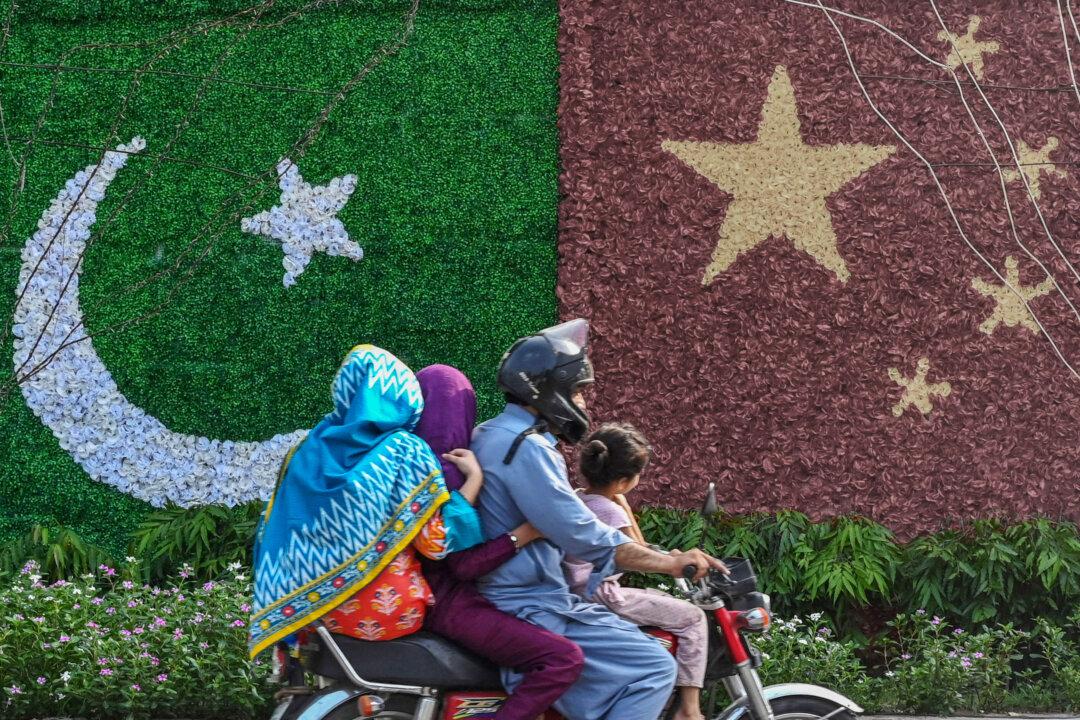China’s investments in Pakistan have a dark side. They waste domestic resources, promote corruption, and leave the country heavily indebted to Beijing, which could turn Pakistan into another Sri Lanka.
China has been a significant investor in the Pakistani economy, building the China-Pakistan Economic Corridor (CPEC) to connect Western China with the Indian Ocean.
This grandiose project appears to offer mutual benefits for both sides.
For Pakistan, CPEC will create income and jobs for the locals who are building it. In addition, it will help the country move from a frontier economy to an emerging economy.
For China, CPEC, part of the Belt and Road Initiative (BRI), will provide a strategic route to the riches of the Middle East and Europe, bypassing the Malacca Strait between Malaysia and Indonesia. This will save a lot of money on transportation costs for Chinese trade with these regions.
However, deals among countries aren’t made in heaven—where economic resources are free, no conflicting interests exist, and wishes come true. They are made on earth, where these benefits may never be realized as the project may never be completed due to a number of external and internal issues.
“The project hopes to boost Pakistan’s economy and simultaneously provide an alternative to the plight of the Malacca Strait for China. Many internal issues have enlarged the project’s focus, such as Baloch’s agitation against exploiting natural resources, lack of employment for locals, and increased terrorist attacks using ‘terrorist aliases’ operating in Pakistan. The South Asian insecurity has established new dimensions for the regional allies.”
Moreover, Beijing’s planning, financing, and execution of the CPEC project harms Pakistan, too. It adds to the country’s corruption since it involves state-owned contractors on both sides of the partnership, pushing project costs higher by the year and wasting domestic resources.
That’s the model China used in rescheduling Sri Lanka’s debt, officially turning the country’s Hambantota port into China’s port for 99 years. A milestone deal signed early last year gives China Merchants Port Holdings—an arm of the Chinese government—a 70 percent stake in the Indian Ocean’s prominent outpost.
Like CPEC, the construction of the Hambantota port began with loans from China. But when Sri Lanka could not repay the loans, Beijing converted these loans to equity, subtly turning Sri Lanka into a “semi-colony.” The same thing will eventually happen to Pakistan when China assumes ownership and control of CPEC and collects tolls from vehicles that pass through.
The three professors examine China’s strategic investment in executing the BRI and provide further insight into how these investments could become a debt trap, turning Pakistan into another Sri Lanka.
“The ‘debt-trap diplomacy’ in Hambantota’s port shows China’s vested interests in South Asia and the Indian Ocean Region (IOR),” they said.
“Sri Lanka’s inability to repay its colossal loan has resulted in the 99-year lease with more than 70 percent of the port’s control rights to a Chinese company. In 2016, the International Monetary Fund (IMF) put forward its opinion on the lack of transparency in the BRI project financing. Similarly, the massive investment in the CPEC can ensure that China invades the Indian Ocean region and makes regional claims quickly and aggressively, posing a potential threat to India’s national security.”







